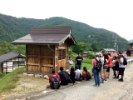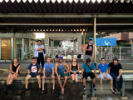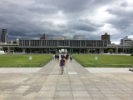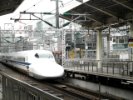Japan (Summer)

The Japan study abroad program is designed to reinforce direct personal observation and experience as a way to study the architecture, urbanity, culture and history of Japan. The program is divided into both urban and rural experiences. While Tokyo is the home-base, the program will include at least 3 weeks of travel to rural areas to study Japan’s significant historical traditions, in addition to a week-long excursion via high-speed rail to visit several of Japan’s most important historical and culturally significant architectural sites. Locations include; Ise, Nara, Kyoto, Kobe, Himeji, Kurashiki, Naoshima, Teshima, and Hiroshima.
The coursework for the seminars and the studio is workshop-driven, collaborative and at times, in-situ. Class time is spent in a public co-working space in central Tokyo with direct access to various digital prototyping tools, and daily exposure to both local and international designers and creative thinkers. While in Tokyo, students will use both analog and digital design techniques to map, visualize, model and analyze the city’s variety of building typologies and paradoxically complex and efficient infrastructure. By contrast, a significant portion of class time will be dedicated to the design, fabrication, and assembly of a full-scale prototype to be completed in Hida; a small town in the Gifu prefecture that is historically distinguished as a prominent location for traditional wood-joinery techniques, abundance of natural resources, and local timber industries. The Hida workshop is aimed at combining current computational design techniques with traditional craft, and provides students with the opportunity to work alongside of experienced experts in both arenas.
The program is supported by FabCafe Tokyo and FabCafe Hida; organizations that foster innovative design-thinking via collaboration, by faculty of Meiji University and Tokyo University of Science, and by Shioya Sangyo; a 100 year old metals fabricator and sponsor of two prior workshops that exposed students to their industrial 6-axis steel laser cutter.
Studio director and faculty lead: Nicholas Bruscia, clinical assistant professor of architecture

















